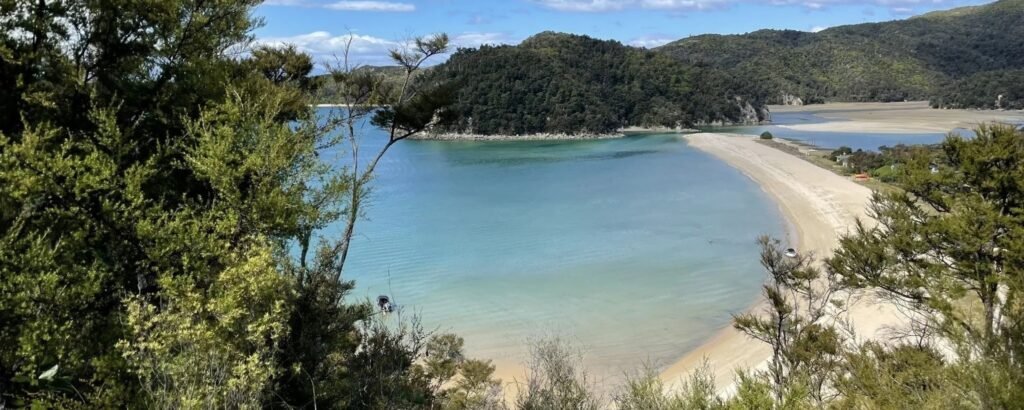
The Best Hiking Trails in Abel Tasman showcase the heart of this coastal paradise. From multi-day journeys along golden beaches to short walks through lush native bush, the park has tracks for every type of walker. Whether you want a full wilderness adventure or just a peaceful stroll, these trails highlight why Abel Tasman remains one of the most popular places to hike in Aotearoa – New Zealand.
1. Abel Tasman Coastal Track – The Great Walk
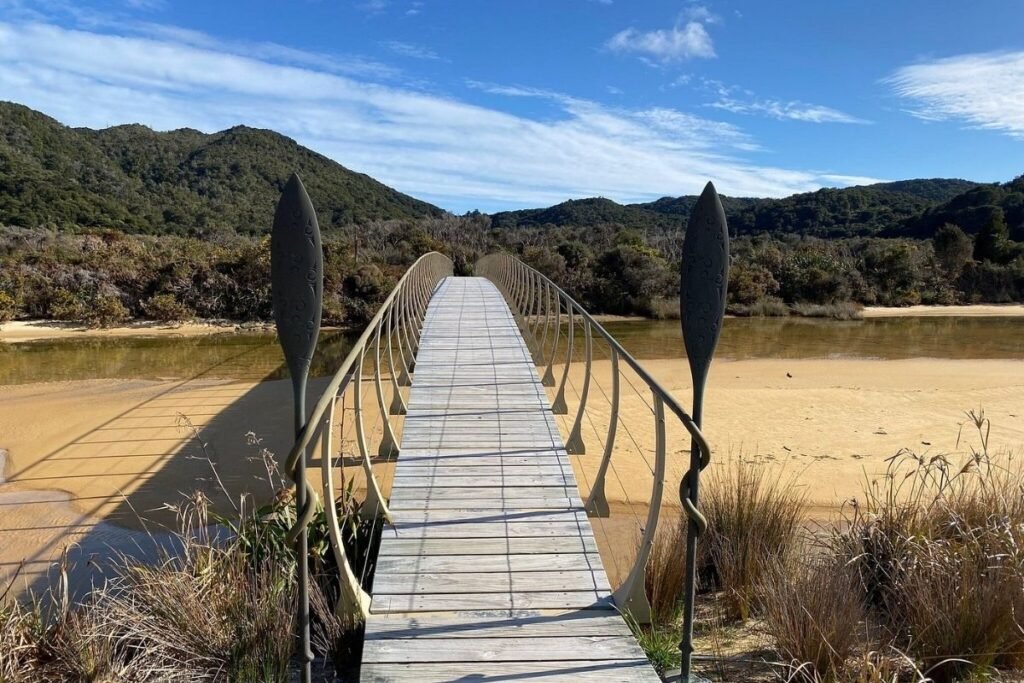
The Abel Tasman Coastal Track is the biggest and most famous of the Best Hiking Trails in Abel Tasman. Stretching 60 km from Marahau to Wainui Bay, this Great Walk takes you across golden beaches, tidal inlets and forested headlands. It can be walked in sections or as a 3–5 day hike.
Quick facts:
- 🥾 Length: 60 km (multi-day)
- ⏱️ Time: 3–5 days, or shorter day walks
- 🌊 Highlights: Anchorage Bay, Bark Bay, Totaranui, tidal crossings
- 🛶 Water taxis available to break up the track
- 🏕️ DOC huts and campsites – bookings essential in peak season
2. Pitt Head Loop Track – Short & Scenic
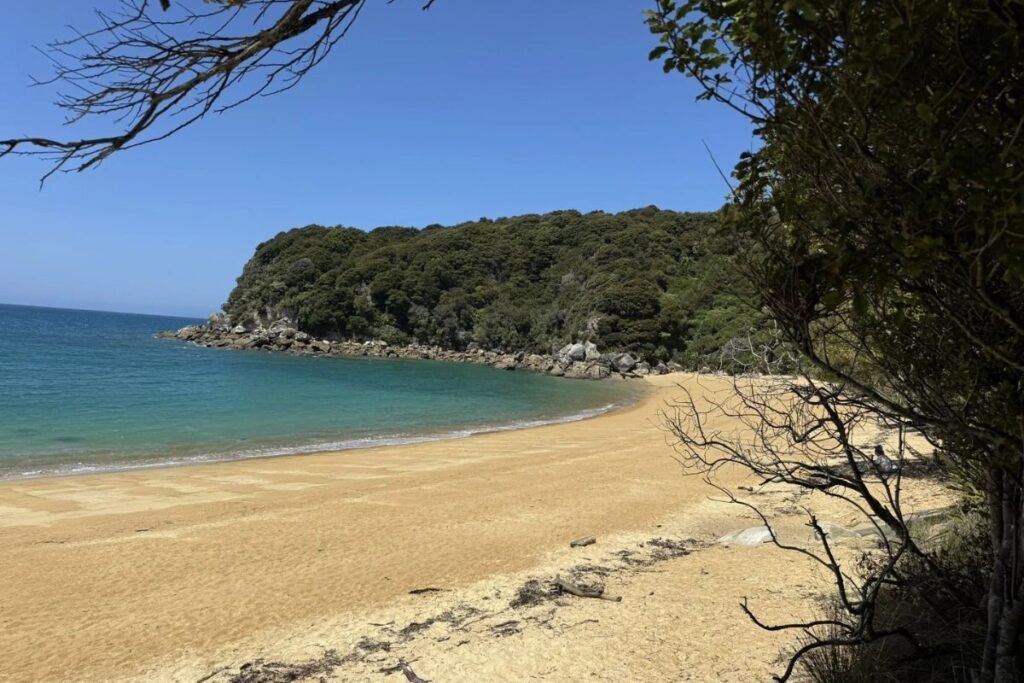
The Pitt Head Loop Track is a rewarding side trip for trampers staying at Anchorage Hut or Campsite in Abel Tasman National Park. This short loop takes you through lush coastal forest to the Pitt Head Lookout, where you’ll find panoramic views over golden sand beaches and turquoise bays.
Quick facts:
- 🥾 Length: 3.4 km loop
- ⏱️ Time: 1–1.5 hours
- ⛰️ Elevation gain: 107 m
- 🌿 Highlights: Coastal forest, lookout views, golden beaches
- 🚤 Access via the Abel Tasman Coast Track or by water taxi to Anchorage
- 🏕️ Bookings required for:
3. Gibbs Hill Track – Panoramic Views
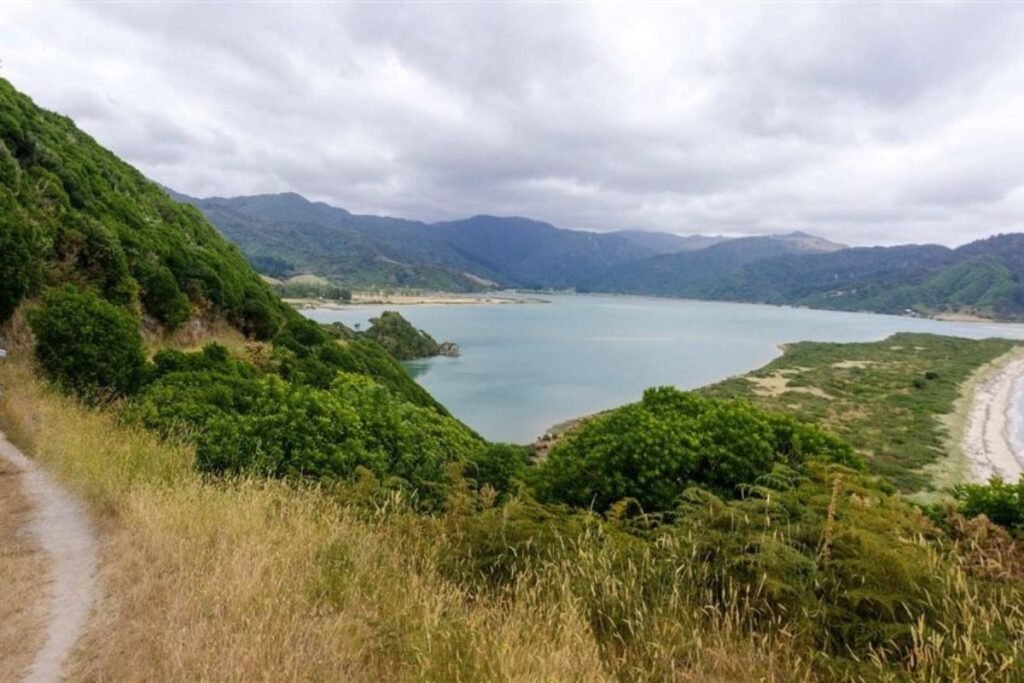
The Gibbs Hill Track takes you from Tōtaranui to the summit of Gibbs Hill (405 m) in Abel Tasman National Park. The path winds through bush and open sections, climbing steadily before rewarding you with spectacular views across Golden Bay and the Abel Tasman coastline.
Quick facts:
- 🥾 Length: 8.7 km return (out & back)
- ⏱️ Time: 3–3.5 hours
- ⛰️ Elevation gain: 385 m
- 🌿 Highlights: Panoramic summit views, forest and coastal scenery, varied terrain
- 🚵 Shared track with mountain bikers (1 May – 1 October, max group size 8 riders)
- 🚗 Access from the end of Tōtaranui Road – narrow and unsealed, drive with care
- 💪 Track includes some steep sections, best for moderate fitness
4. Harwoods Hole Track – Geological Wonder
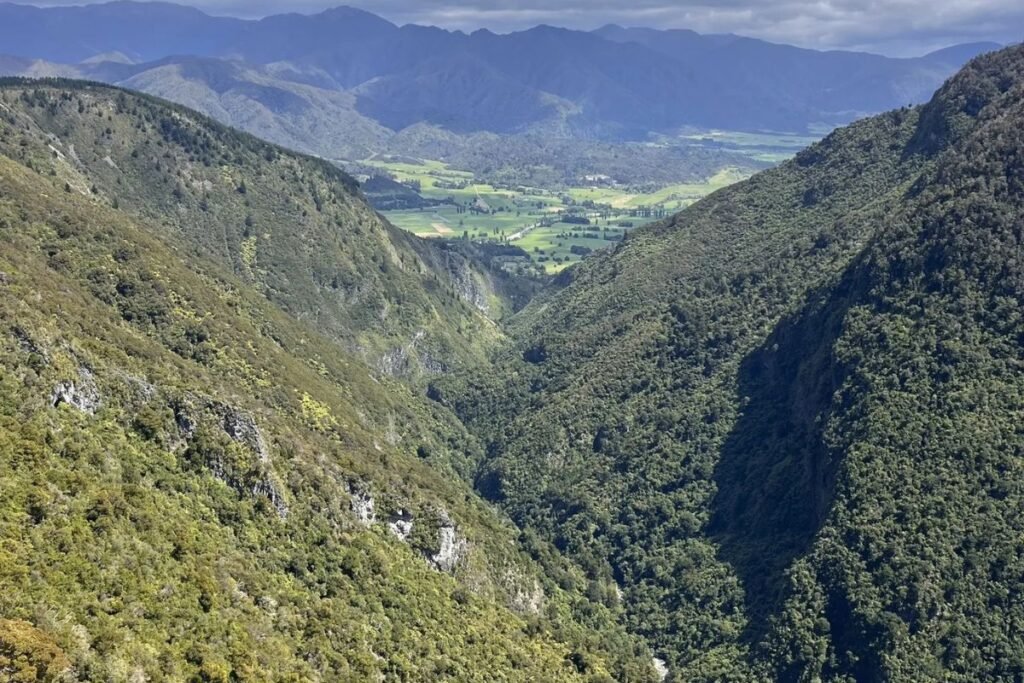
The Harwoods Hole Track is one of the most dramatic hikes near Abel Tasman. This trail leads you through native bush and past limestone rock formations before arriving at the deepest vertical shaft in New Zealand – a now dry sinkhole plunging 183 metres straight down.
Quick facts:
- 🥾 Length: 7.2 km return (out & back)
- ⏱️ Time: 2–2.5 hours
- ⛰️ Elevation gain: 187 m
- 🌿 Highlights: Limestone landscape, native forest, dramatic sinkhole, lookout detour
- 🚗 Access via a narrow dirt road to the Canaan Downs car park
- ⚠️ No barriers around the shaft – not safe for young children
- ⛺ Canaan Downs Campsite nearby (bookings required) – DOC info here
5. Wainui Falls Track – Family Favourite
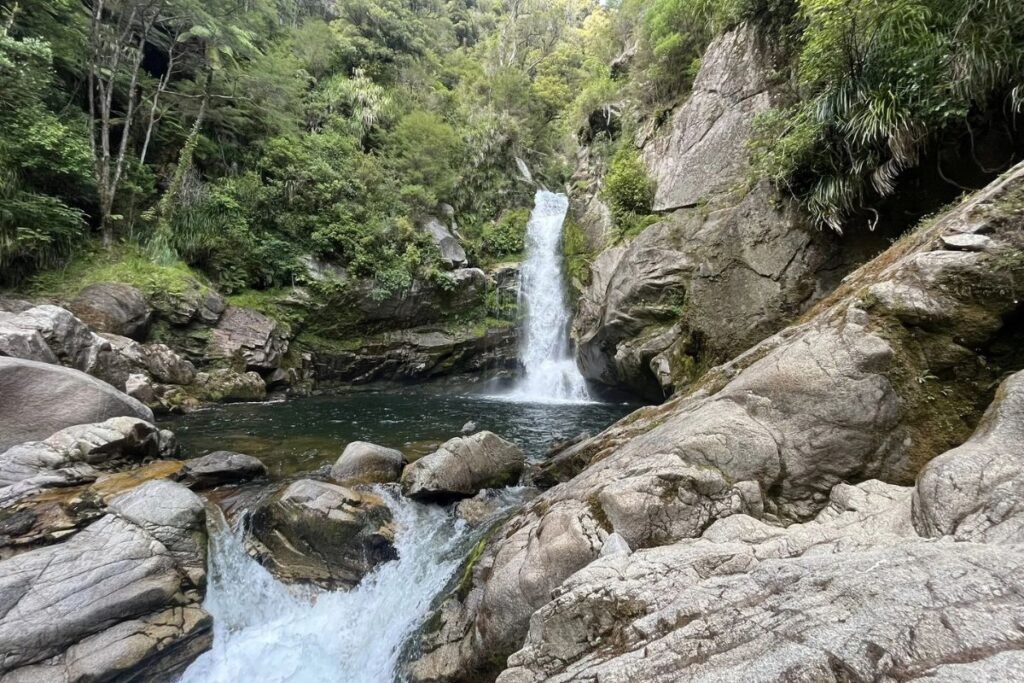
A short but rewarding bush walk that leads to the largest waterfall in Golden Bay, plunging 20 metres into a clear pool. It’s a local favourite and one of the most accessible trails.
Quick facts:
- 🥾 Length: 3.4 km return
- ⏱️ Time: 1.5 hours
- 🌊 Highlights: 20-metre waterfall, swing bridge, lush bush
- 🚗 Access from car park off Wainui Valley Road
- 😀 Family-friendly with some uneven sections
Closing Thoughts
Abel Tasman National Park is woven with multiple tracks, ranging from gentle coastal strolls to challenging climbs with sweeping views. While there are countless walks to explore, these five represent the Best Hiking Trails in Abel Tasman – each offering its own mix of beauty, history and adventure. Whether you’re here for a multi-day journey or a short scenic loop, the park has a trail to match your pace and passion. These are our top picks, but every step in Abel Tasman feels like a treasure waiting to be discovered.
“Whatungarongaro te tangata toitū te whenua”
People pass on, but the land remains.